 "ttyymmnn" (ttyymmnn)
"ttyymmnn" (ttyymmnn)
01/18/2019 at 12:35 • Filed to: wingspan, Planelopnik, TDIAH
 9
9
 15
15
 "ttyymmnn" (ttyymmnn)
"ttyymmnn" (ttyymmnn)
01/18/2019 at 12:35 • Filed to: wingspan, Planelopnik, TDIAH |  9 9
|  15 15 |
!!! UNKNOWN CONTENT TYPE !!!
Welcome to
This Date in Aviation History
, getting of you caught up on milestones, important historical events and people in aviation from January 16 through January 18.
!!! UNKNOWN CONTENT TYPE !!!

Two F-15E Strike Eagles, and F-15C Eagle, and two F-16 Fighting Falcons fly over the burning oil fields of Kuwait. (US Air Force)
January 17, 1991 – Operation Desert Storm begins with a massive air campaign against Iraqi forces in Kuwait and Iraq. It’s difficult to know what Iraqi president Saddam Hussein was thinking when he invaded the tiny nation of Kuwait on Iraq’s southern border on August 2, 1990. Some point to a dispute over slant drilling, with Hussein accusing the Kuwaitis of drilling underneath Iraqi soil from the Kuwaiti side of the border. Others suggest that Hussein was trying to rain riches from Kuwait to offset the huge debt incurred by the Iraqi government following a protracted !!!error: Indecipherable SUB-paragraph formatting!!! . Or perhaps it was simply hubris on the part of a ruthless dictator. Regardless, the invasion brought swift condemnation from all of the world’s major powers. One day after the invasion, the United Nations passed !!!error: Indecipherable SUB-paragraph formatting!!! calling for the immediate withdrawal of Iraqi troops. When negotiations failed a coalition of nations, led by the United States, decided to liberate Kuwait militarily, launching a two-part operation that began with Operation Desert Shield, a massive air assault against Iraqi ground positions. Desert Shield was followed by Operation Desert Storm, when ground forces moved into Kuwait and Iraq.
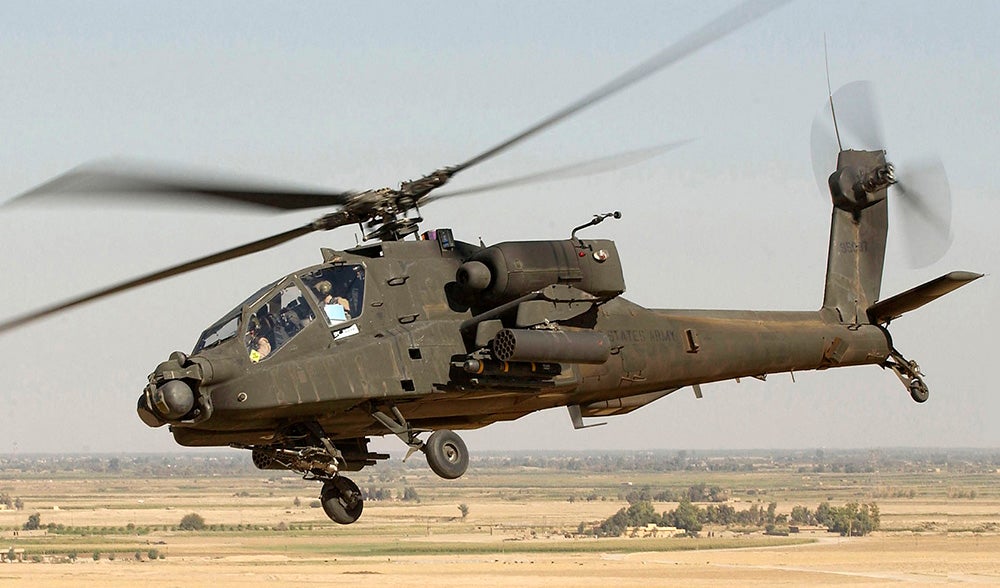
US Army AH-64 Apache attack helicopters, like this one photographed in Iraq in 2005, helped clear Iraqi radar defenses on the opening night of the air assault (US Army)
The air assault began at 2:10 am on the morning of January 17, when Task Force Normandy, a flight of eight !!!error: Indecipherable SUB-paragraph formatting!!! attack helicopters led by two !!!error: Indecipherable SUB-paragraph formatting!!! helicopters, destroyed radar sites on the Iraqi border that would have alerted the Iraqi defenses of an impending attack. This was followed with sorties against airfields, radar installations, and Iraqi command and control centers as far north as Baghdad. !!!error: Indecipherable SUB-paragraph formatting!!! cruise missiles were fired at the Iraqi capital from ships of the US Navy, and !!!error: Indecipherable SUB-paragraph formatting!!! flew all the way from Louisiana to drop their bombs on Iraqi targets.
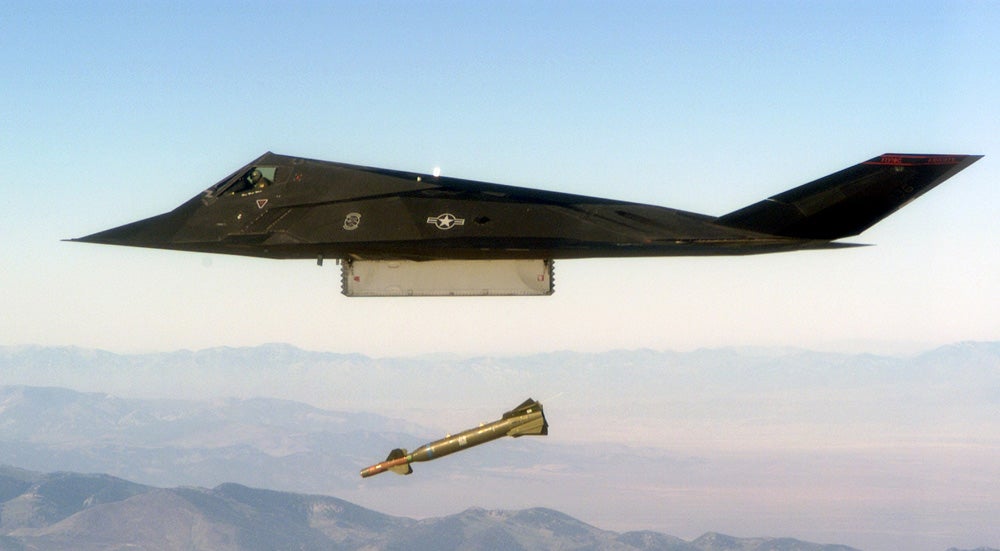
A US Air Force F-117 Nighthawk drops a laser-guided bomb during a training mission in the United States (US Air Force)
And while it wasn’t the first time that the !!!error: Indecipherable SUB-paragraph formatting!!! had flown into battle (two took part in the invasion of Panama in 1989), it was the first time they were employed in large numbers. Flying over Baghdad, one of the most heavily defended cities in the world, the Nighthawks went completely undetected. The only way the Iraqis knew there were bombers in the air was when something blew up. Employing extremely accurate laser guided bombs, the Nighthawks were able to destroy almost all of the vital command and control centers in the capital on the first night of the campaign. The F-117 was so effective, and invisible to Iraqi defenders, that even though it flew only one percent of all sorties by Coalition forces, Nighthawk pilots accounted for forty percent of all bomb damage, and had an astounding seventy-five percent rate of direct hits. Not one F-117 was struck by enemy fire.
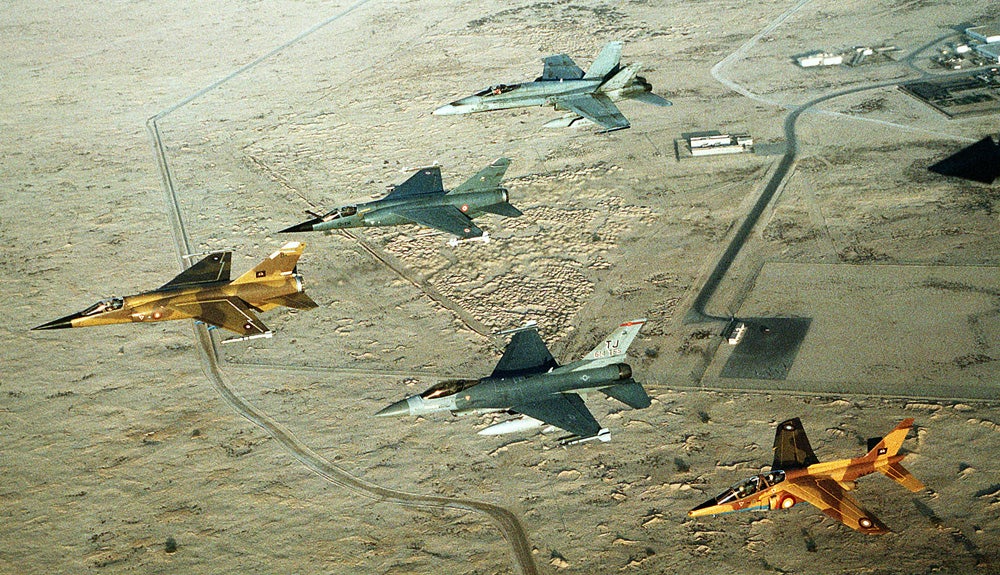
The true multinational effort of Desert Shield/Desert Storm is illustrated in this formation flight. From left to right: a Qatari Mirage F1, a French Mirage F1, a U.S. Air Force F-16C Fighting Falcon, a Canadian CF-18A Hornet and a Qatari Alpha Jet. (US Air Force)
But it wasn’t all stealth fighters doing the work. More than 1,000 sorties were flown that first night, including !!!error: Indecipherable SUB-paragraph formatting!!! electronic warfare planes that escorted !!!error: Indecipherable SUB-paragraph formatting!!! to bomb Iraqi airfields. During that mission, one of the Ravens scored a kill against an Iraqi !!!error: Indecipherable SUB-paragraph formatting!!! when the Mirage’s pilot crashed while maneuvering to avoid the Raven. This marked the only time an F-111 achieved an aerial victory over an opponent. US Navy fighters and attack aircraft also took part in the action and, in one instance, two !!!error: Indecipherable SUB-paragraph formatting!!! , on their way to attack Iraqi oil fields, dispatched two Iraqi !!!error: Indecipherable SUB-paragraph formatting!!! fighters before continuing to the target and dropping their bombs. Though the bulk of combat missions were flown by the US, British !!!error: Indecipherable SUB-paragraph formatting!!! and !!!error: Indecipherable SUB-paragraph formatting!!! fighters played an important role in attacking air fields and ground targets. French Jaguars and !!!error: Indecipherable SUB-paragraph formatting!!! also pressed the ground attack, while !!!error: Indecipherable SUB-paragraph formatting!!! fighters provided cover for the bombers. Canadian forces flying the !!!error: Indecipherable SUB-paragraph formatting!!! took part in escort and ground attack missions.

Destroyed and abandoned vehicles litter Highway 80, known as the Highway of Death, after retreating Iraqi soldiers were attacked by Coalition aircraft at the close of the battle (US Air Force)
The air campaign continued until February 23 and, by the time the Coalition ground forces entered Kuwait, the much vaunted Iraqi air force had either been completely destroyed or fled, and command of Iraqi troops was virtually impossible. In a lightning “hail Mary” sweep through southern Iraq led by tank-busting !!!error: Indecipherable SUB-paragraph formatting!!! attack aircraft, Coalition forces surrounded and cut off the Iraqi army. Retreating Iraqi forces were decimated by aerial attacks by Coalition aircraft on the so-called Highway of Death, killing anywhere from 2,000-10,000 Iraqi invaders. Operation Desert Storm had taken a mere 100 hours to liberate Kuwait. In all, Coalition forces lost 52 fixed-wing aircraft (39 in combat) and 23 helicopters (five lost in combat), with 46 pilots and crew killed or missing. Though some Iraqi pilots chose to flee to Iran rather than fight, the Iraqi air force lost 259 aircraft, while as many as 12,000 soldiers were killed along with an estimated 3,000 civilians.
!!! UNKNOWN CONTENT TYPE !!!
Short Takeoff
!!! UNKNOWN CONTENT TYPE !!!
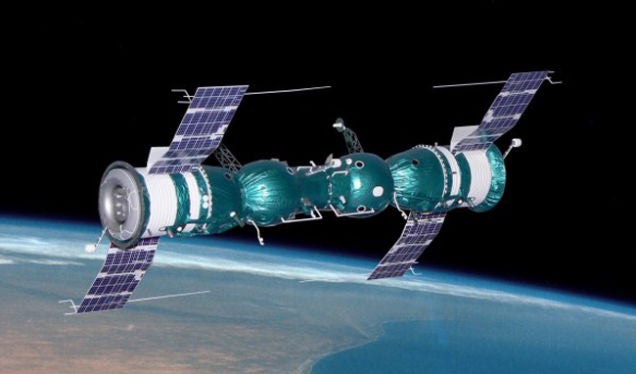 !!!CAPTION ERROR: MAY BE MULTI-LINE OR CONTAIN LINK!!!
!!!CAPTION ERROR: MAY BE MULTI-LINE OR CONTAIN LINK!!!
January 16, 1969 – The docking of Soyuz 4 and Soyuz 5, the first time that two spacecraft docked in space and transferred crew from one ship to the other. Soyuz 4, piloted by a single cosmonaut, blasted off from the !!!error: Indecipherable SUB-paragraph formatting!!! on January 14. Soyuz 5 blasted off one day later with a crew of three cosmonauts. All four cosmonauts were flying on their first mission into space. Soyuz 4 and 5 successfully docked on January 16 and, on the 65th orbit of the Earth, two cosmonauts from Soyuz 5 performed a space walk to transfer to Soyuz 4, as a docking tube had not yet been developed. Soyuz 4 and 5 returned to Earth on January 17 and 18 respectively. The Americans had made their first successful docking in orbit on July 19, 1966 during !!!error: Indecipherable SUB-paragraph formatting!!! .
!!! UNKNOWN CONTENT TYPE !!!
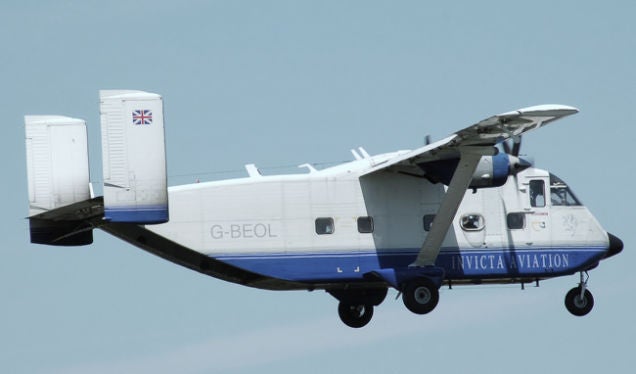 !!!CAPTION ERROR: MAY BE MULTI-LINE OR CONTAIN LINK!!!
!!!CAPTION ERROR: MAY BE MULTI-LINE OR CONTAIN LINK!!!
January 17, 1963 – The first flight of the Short SC.7 Skyvan, a 19-seat, twin turboprop utility aircraft developed by !!!error: Indecipherable SUB-paragraph formatting!!! (Shorts) of Northern Ireland. The SC.7 was inspired by the !!!error: Indecipherable SUB-paragraph formatting!!! , and the idea for developing the Skyvan came about when !!!error: Indecipherable SUB-paragraph formatting!!! approached Shorts with the idea of developing the Aerovan. Shorts went about building their own aircraft instead, though the two designs do share certain similarities. The Skyvan’s cavernous fuselage makes it ideal for cargo hauling and skydiving, and it was later developed into the !!!error: Indecipherable SUB-paragraph formatting!!! and !!!error: Indecipherable SUB-paragraph formatting!!! which were used as commuter airliners. A total of 153 Skyvans were produced between 1963-1986.
!!! UNKNOWN CONTENT TYPE !!!
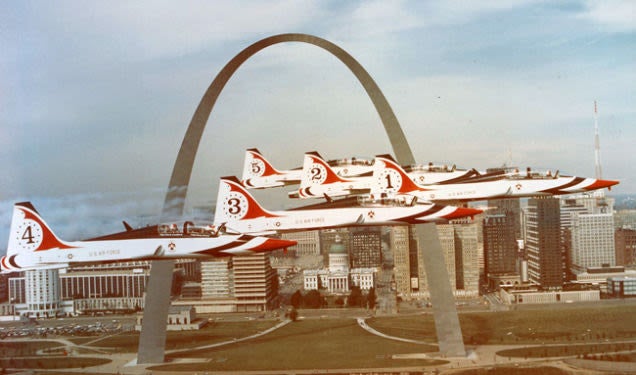
(US Air Force)
January 18, 1982 – Four USAF Thunderbirds are lost in a crash during a practice flight.
Since the Thunderbirds began performing air shows in 1953, three Thunderbird pilots have been lost during an air show. But training accidents have claimed 18 lives, including an entire four-ship flight of
!!!error: Indecipherable SUB-paragraph formatting!!!
that crashed into the ground at the Thunderbirds’ Indian Springs, Nevada training area. The team was practicing a line-abreast loop when the lead pilot, Maj. Tom Lowry, experienced a jammed stabilizer that caused him to fly into the ground. The other pilots, following standard procedure, were fixed on the leader, and not looking forward. The four planes hit simultaneously, instantly killing all four pilots. After an 18-month hiatus from performing, the Thunderbirds transitioned back to frontline fighters and returned to the show circuit flying the
!!!error: Indecipherable SUB-paragraph formatting!!!
.
!!! UNKNOWN CONTENT TYPE !!!
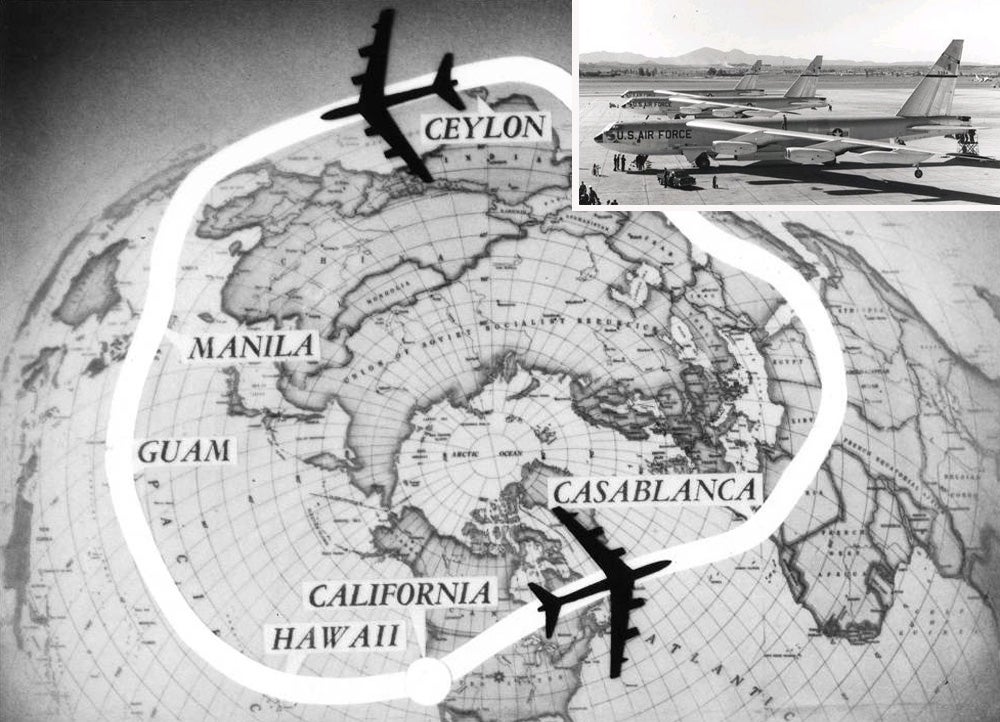
(US Air Force)
January 18, 1957 – Three USAF Boeing B-52B Stratofortresses complete the world’s first non-stop circumnavigation of the earth in a jet-powered aircraft. In a mission dubbed Operation Power Flite, five USAF B-52s from the 93rd Bombardment Wing (three, plus two spares) departed from Castle AFB in California on a flight that was as much about propaganda as it was about testing operational capabilities. With aerial refuelings provided by !!!error: Indecipherable SUB-paragraph formatting!!! tankers, the flight covered 24,235 miles and was completed in 45 hours and 19 minutes. Lt. Col. James Morris, the commander of the lead aircraft Lucky Lady III , had previously been copilot of !!!error: Indecipherable SUB-paragraph formatting!!! , a !!!error: Indecipherable SUB-paragraph formatting!!! that circumnavigated the globe nonstop in 1949. Upon their return, Strategic Air Command General !!!error: Indecipherable SUB-paragraph formatting!!! presented the B-52 crews with the !!!error: Indecipherable SUB-paragraph formatting!!! .
!!! UNKNOWN CONTENT TYPE !!!
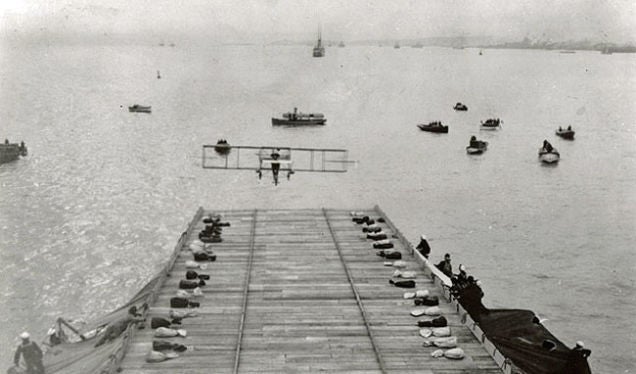 !!!CAPTION ERROR: MAY BE MULTI-LINE OR CONTAIN LINK!!!
!!!CAPTION ERROR: MAY BE MULTI-LINE OR CONTAIN LINK!!!
January 18, 1911 – Eugene Ely makes the first landing on a ship. After succesfuly taking off from USS Birmingham (CL 2) in Hampton Roads two months earlier, Ely, with the help of !!!error: Indecipherable SUB-paragraph formatting!!! and at the urging of the US Navy, made the first landing on a ship when he put his !!!error: Indecipherable SUB-paragraph formatting!!! down on USS Pennsylvania (ACR 4) moored in San Francisco Bay. A 120-foot temporary deck was built on the ship, outfitted with ropes tied to sandbags to provide a crude arresting system. While thousands of spectators watched, Ely performed a flawless landing and, after lunch with the captain of Pennsylvania , Ely took off for the return flight to the Tanforan Race Track near San Francisco where he had taken off earlier in the day.
!!! UNKNOWN CONTENT TYPE !!!
Connecting Flights
!!! UNKNOWN CONTENT TYPE !!!
!!! UNKNOWN CONTENT TYPE !!!
!!! UNKNOWN CONTENT TYPE !!!
!!! UNKNOWN CONTENT TYPE !!!
!!! UNKNOWN CONTENT TYPE !!!
If you enjoy these Aviation History posts, please let me know in the comments. And if you missed any of the past articles, you can find them all at
!!!error: Indecipherable SUB-paragraph formatting!!!
. You can also find more stories about aviation, aviators and airplane oddities at
!!!error: Indecipherable SUB-paragraph formatting!!!
.
!!! UNKNOWN CONTENT TYPE !!!
 CarsofFortLangley - Oppo Forever
> ttyymmnn
CarsofFortLangley - Oppo Forever
> ttyymmnn
01/18/2019 at 12:47 |
|
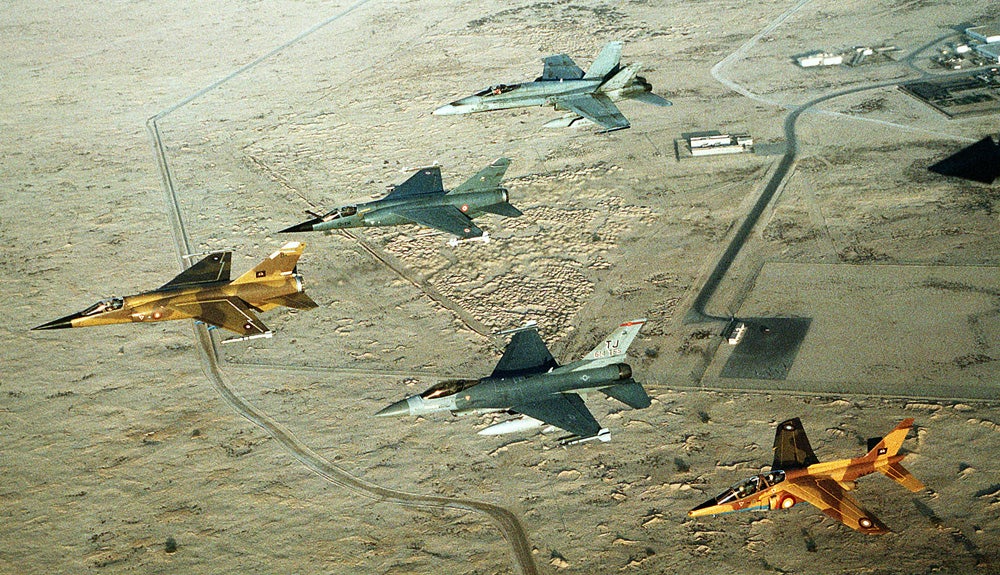
Both this and the lede photo are awesome
 Tristan
> ttyymmnn
Tristan
> ttyymmnn
01/18/2019 at 13:08 |
|
January 31 marks the anniversary of the only combat loss of an AC-130. Spirit 03 was shot down by a SAM while providing CAS after dawn. The 14-member crew was the largest single-incident loss of life for coalition forces during Desert Storm.
Knowing the circumstances of that loss, I could never take an easy breath any time one of our planes hadn't returned to base before dawn. Granted, Spirit 03 had no countermeasures.
 cbell04
> ttyymmnn
cbell04
> ttyymmnn
01/18/2019 at 13:23 |
|
I have I have some free time and I've definitely missed a bunch of these. Time to catch up!
 user314
> ttyymmnn
user314
> ttyymmnn
01/18/2019 at 13:24 |
|
Time to watch the Video Ordnance/A&E Desert Shield/Storm specials again...
 ttyymmnn
> CarsofFortLangley - Oppo Forever
ttyymmnn
> CarsofFortLangley - Oppo Forever
01/18/2019 at 14:05 |
|
This coalition photo is one of my favorites.
 ttyymmnn
> Tristan
ttyymmnn
> Tristan
01/18/2019 at 14:07 |
|
Spirit 03 had no countermeasures.
Why not? I don’t remember hearing about this. That’s tough.
 ttyymmnn
> cbell04
ttyymmnn
> cbell04
01/18/2019 at 14:07 |
|
Thanks for reading!
 ttyymmnn
> user314
ttyymmnn
> user314
01/18/2019 at 14:10 |
|
Good stuff! Norman Friedman was in ALL of these things back in the day. Also, interesting livery on that KC-10. Is that a SAC livery?
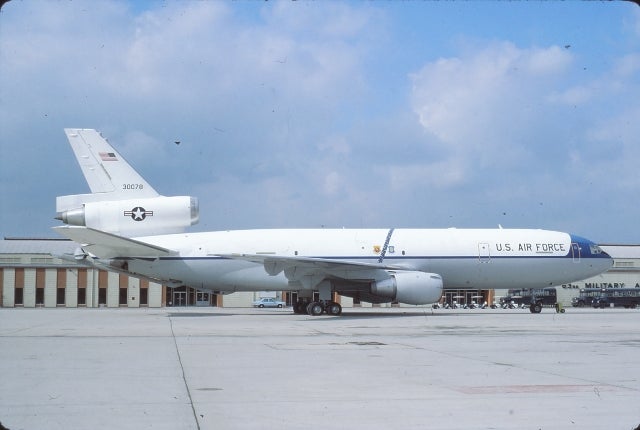
 Tristan
> ttyymmnn
Tristan
> ttyymmnn
01/18/2019 at 14:29 |
|
I know I’ve read it before, but now I’m trying to find the source and I’m failing, so now I’m questioning the validity of the claim. Possibly the DIRCM was faulted or chaff/flare were expended? All gunships have been fitted with vastly-improved infrared countermeasures in the last few years, and W/J-model gunships are designed to fly at a higher/safer altitude for daylight operations.
 user314
> ttyymmnn
user314
> ttyymmnn
01/18/2019 at 14:34 |
|
Yeah, all the Extenders were painted that scheme at first, then switched over by the middle 90s.
 T5Killer
> ttyymmnn
T5Killer
> ttyymmnn
01/18/2019 at 18:38 |
|
Awesome post! Brings back memories of being in 5th grade and glued to the news. I was a HUGE military/Aviation geek as a kid . Also had a cousin I was super close to growing up that was in the 1st Cav at the time.
 ttyymmnn
> T5Killer
ttyymmnn
> T5Killer
01/18/2019 at 19:20 |
|
I was such a child also. My first experience watching that sort of stuff was the Falklands War. I grew up in Norfolk, VA so there was a huge Navy presence. It was a very big deal when those Libyan fighters got shot down.
Also, thanks for reading!
 ttyymmnn
> T5Killer
ttyymmnn
> T5Killer
01/18/2019 at 19:22 |
|
I was in grad school when Desert Storm kicked off.....
 aqualungdarmah
> ttyymmnn
aqualungdarmah
> ttyymmnn
01/22/2019 at 16:03 |
|
“ The Americans would perform their own space docking two months later.”
Gemini 8 docked with an Agena on 3/16/66
 ttyymmnn
> aqualungdarmah
ttyymmnn
> aqualungdarmah
01/22/2019 at 16:11 |
|
You are absolutely correct. I must have misread 1966 and 1969. The Gemini 8 docking, however, was unsuccessful and almost deadly. The Americans’ first successful docking was Gemini 10, which docked with the Agena target vehicle on July 19, 1966. I will edit. Thanks for pointing that out.